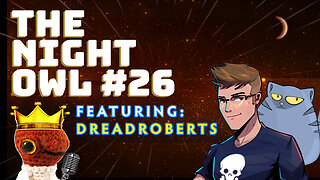Spasm_Session of resonance therapy_BIORESONANCE SOUND THERAPY
Otherwise known as muscle cramps, spasms occur when your muscle involuntary and forcibly contracts uncontrollably and can’t relax. These are very common and can affect any of your muscles. They can involve part or all of a muscle, or several muscles in a group. The most common sites for muscle spasms are the thighs, calves, feet, hands, arms and abdomen. When occurring in the calves, especially, such cramps are known as “charley horses.” A leg cramp that happens at night when you’re at rest or asleep is called a “nocturnal leg cramp.”
“Idiopathic” means that the exact cause is unknown, and that’s the case with muscle spasms. Some experts believe that one of more of the following may be to blame in most cases:
Not enough stretching.
Muscle fatigue.
Exercising in the heat.
Dehydration.
Depletion of electrolytes (salts and minerals like potassium, magnesium and calcium in your body).
Involuntary nerve discharges.
Restriction in the blood supply.
Stress.
Too much high-intensity exercise.
Possible causes for nocturnal leg cramps (leg cramps at night), specifically, include:
Sitting for long periods of time.
Overusing the muscles.
Standing or working on concrete floors.
Sitting improperly.
Muscle spasms can feel like a stitch in the side or be agonizingly painful. You may see a twitch under your skin and it may feel hard to the touch. Spasms are involuntary. The muscles contract and it takes treatment and time for them to relax. They are very common, especially in older adults and athletes.
If the muscle spasm is severe, happens frequently, responds poorly to treatment and is not related to obvious causes, make an appointment with your healthcare provider. The spasms could be related to underlying factors.
Music affects a person, it can calm and cheer up, sounds can heal. The therapeutic effect is due to the frequency fluctuations of various sounds that resonate with various organs of the body. Sounds have bioresonance compatibility with the vibrations of human internal organs, which is the basis of the positive effect of sound treatment. The sound vibrations of music trigger many mechanisms of higher nervous activity in the patient's subconscious and start the healing process.
Sound therapy does not replace medical treatment, but complements it, improves the positive dynamics of treatment and speeds up recovery.
TO ACHIEVE A POSITIVE RESULT, DAILY LISTENING TO VIDEOS IS REQUIRED.
#bioresonance#healing_energy#healing_frequencies
You have the opportunity to support the channel
https://www.donationalerts.com/r/radsiaral
https://pin.it/2oG3HeK
https://www.befrugal.com/rs/CMVUAAJ/
https://www.extrabux.com/r/576e52f145
-
 8:49
8:49
JoBlo Originals
9 hours agoWhat Exactly Is WOKE CINEMA?! (And Why People Hate It)
2.77K15 -
 23:12
23:12
Cody and Kellie
9 hours agoEscaping Winter in our Truck Camper in the Low Desert
4.43K12 -
 9:39
9:39
GeekyNerdyTechy
17 hours agoPanasonic LUMIX GH6 - Abandoned?
5.96K2 -
 16:12
16:12
NC Dirt Hunter
8 hours agoCivil War ground gives up its secrets! Metal Detecting with the Minelab Manticore
7.28K -
 1:04:53
1:04:53
ReasonTV
16 hours agoPhil Magness: Who Really Pays The Most Taxes?
8.94K4 -
 LIVE
LIVE
Rekieta Law
4 hours agoDaniel Perry Pardoned, Cohen Pressed, NFL Shaken, Clarence Thomas Grilled, ADL Most Affected
2,999 watching -
 2:15:57
2:15:57
Price of Reason
8 hours agoAmazon Wants FEMINIST Tomb Raider! Gaming DEI Agenda EXPOSED w/ Dreadroberts
12.1K2 -
 1:38:48
1:38:48
TheMonicaCrowleyPodcast
12 hours agoThe 2020 to 2024 Trek Clean Elections
17.2K6 -
 3:34:45
3:34:45
Akademiks
5 hours agoHappy Birthday Big AK. Lets bring it in together chat.
45.7K33 -
 1:28:57
1:28:57
The Charlie Kirk Show
7 hours agoTHOUGHTCRIME Ep. 44 — Is Doxxing Dead? Poo-Loving Libs? The Truth About Pearl Harbor?
65.5K54